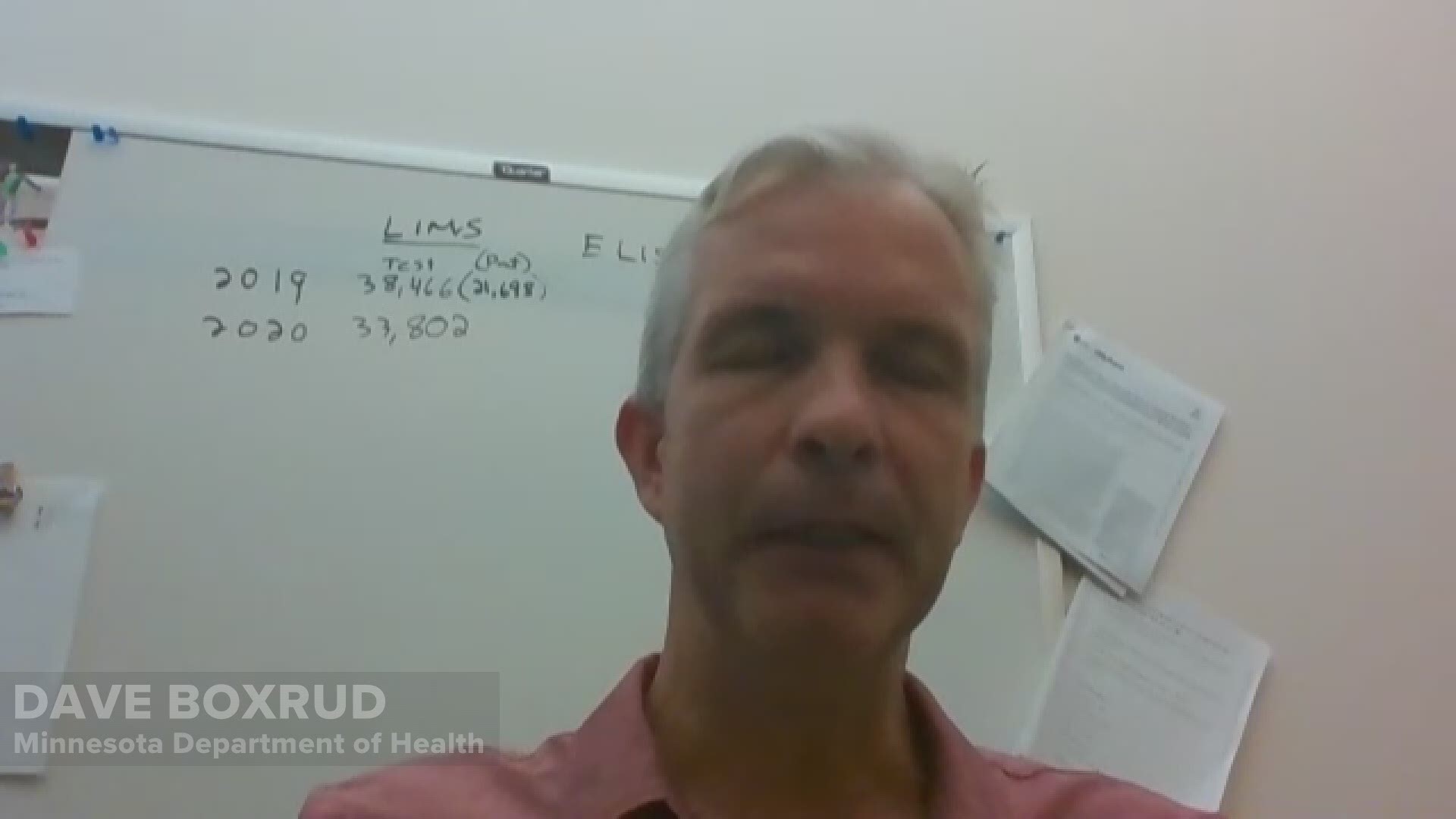ST PAUL, Minn. — The Centers for Disease Control and Prevention (CDC) and state public health leaders have warned about a potentially deadly fall and winter with the co-occurence of COVID-19 and influenza season.
So Minnesota's labs and hospitals are planning for how they're going to test for both viruses - not to mention handle the volume of cases.
"It's going to be almost impossible to distinguish between influenza and COVID because early on, the two viruses can present, manifest, clinically very similar," said Dr. Matthew Binnicker, the Mayo Clinic's Director of Clinical Virology.
Binnicker said several manufacturers are seeking FDA approval for tests that tackle all three viruses: COVID-19, influenza A and influenza B. Some even check for RSV as well.
"There are going to be, I think, a few different options," Binnicker said. "We're going to need to continue to test for COVID alone in some patients. And in others, especially those who have symptoms of a respiratory infection this fall and the winter, we're likely going to need to test for both influenza and COVID in a large number of patients."
The CDC has developed one such test and already has emergency approval for it from the FDA. Dave Boxrud, the interim infectious disease section manager for the Minnesota Department of Health (MDH), said the state public health lab is in the process of evaluating it for potential use.
"It's actually providing more information than what we're getting from our current testing," he said.
Boxrud hopes they'll be able to start using the new test in early September. MDH performs only a fraction of the COVID-19 tests done every day statewide, with the majority done in private labs.
"Every time we do a new test ... there's a lot of upfront work and a lot of testing to make sure that the results are accurate and that it's sensitive and that it's accurate with different people and under different conditions," he said. "And the positives are positives, and the negatives are negative. It's a lot of work."
Boxrud said they are currently in the verification part of this "significant process."
"It looks good, but yeah, it's still gonna take a little bit of time," he said.
Both Boxrud and Binnicker said one purpose of a dual test is simply to conserve testing materials amid supply chain shortages. MDH has expressed concern about the coinciding COVID-19 pandemic and flu season this fall. They're not just keeping an eye on testing supplies, but also the volume of personal protective equipment hospitals will need for the influx.
"We’re continuing to look to source additional supplies of some of the high-quality masks and gowns and the like that we anticipate needing as this pandemic evolves and as we’ve talked about the potential for kind of co-occurrence in the flu season," MDH Commissioner Jan Malcolm said back in July.
The director of the CDC, Dr. Robert Redfield, warned last week that the U.S. could be in for the "worst fall from a public health perspective" the country has ever seen. He said flu vaccines will be crucial to keep hospitals from becoming overwhelmed.
"It could be a difficult fall and winter," Dr. Binnicker said in response to the warning. "I hope that that's not the case, but we're planning for it. On a positive note, there's also the potential if we as a state and we as a country really adapt the precautionary measures like universal masking and continue with physical distancing, that those precautionary measures will have an impact on our influenza rates and COVID rates."
Binnicker said the southern hemisphere has actually seen a positive effect on its flu season, with cases down due to all the protective measures in place to fight COVID. Minnesota saw a similar downturn at the end of its flu season in the spring, with the state under stay-at-home measures.
At the University of Minnesota, one of the testing leaders in the state, a spokesperson said they will not be using the CDC test and do not plan to research their own at this point.
"The University does not currently plan on utilizing the CDC Flu SC2 Multiplex Assay for testing of patients in our clinics," a statement from the university reads. "However, as more testing options become available, Boynton Health and Heath Emergency Response Office will continue to examine how they may be integrated into the University's public health plans for COVID-19 and the influenza season."

